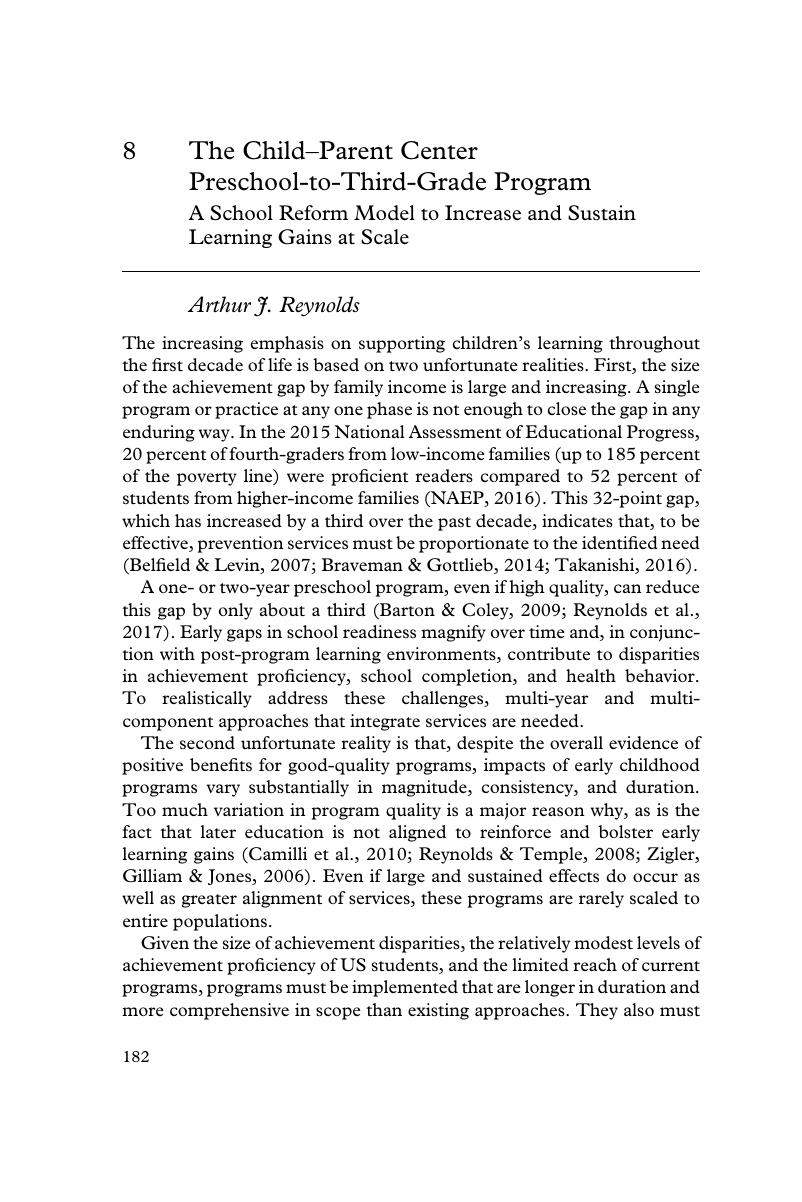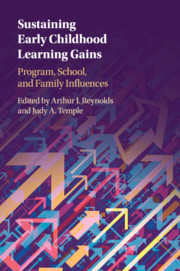Book contents
- Sustaining Early Childhood Learning Gains
- Reviews
- Sustaining Early Childhood Learning Gains
- Copyright page
- Contents
- Figures
- Tables
- Contributors
- Foreword
- Acknowledgments
- 1 Introduction
- Part I Program Dosage and Quality
- Part II Continuity from Preschool to Third Grade
- 6 Patterns of Experiences across Head Start and Kindergarten Classrooms That Promote Children’s Development
- 7 Quality and Continuity in Young Children’s Educational Experiences
- 8 The Child–Parent Center Preschool-to-Third-Grade Program
- 9 State Policies That Support Children’s Literacy through Pre-K–Third Grade Education
- Part III School and Family Processes of Impacts over Time
- Part IV Synthesis and Guiding Principles
- Subject Index
- Name Index
- References
8 - The Child–Parent Center Preschool-to-Third-Grade Program
A School Reform Model to Increase and Sustain Learning Gains at Scale
from Part II - Continuity from Preschool to Third Grade
Published online by Cambridge University Press: 21 December 2018
- Sustaining Early Childhood Learning Gains
- Reviews
- Sustaining Early Childhood Learning Gains
- Copyright page
- Contents
- Figures
- Tables
- Contributors
- Foreword
- Acknowledgments
- 1 Introduction
- Part I Program Dosage and Quality
- Part II Continuity from Preschool to Third Grade
- 6 Patterns of Experiences across Head Start and Kindergarten Classrooms That Promote Children’s Development
- 7 Quality and Continuity in Young Children’s Educational Experiences
- 8 The Child–Parent Center Preschool-to-Third-Grade Program
- 9 State Policies That Support Children’s Literacy through Pre-K–Third Grade Education
- Part III School and Family Processes of Impacts over Time
- Part IV Synthesis and Guiding Principles
- Subject Index
- Name Index
- References
Summary

- Type
- Chapter
- Information
- Sustaining Early Childhood Learning GainsProgram, School, and Family Influences, pp. 182 - 209Publisher: Cambridge University PressPrint publication year: 2019



